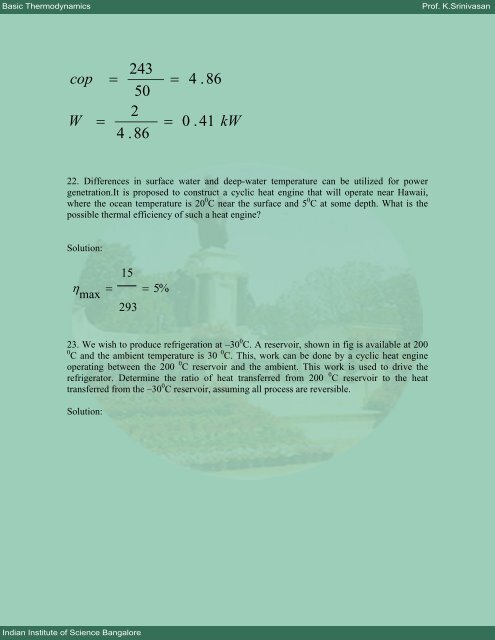Problems and Solutions - E-Courses
Problems and Solutions - E-Courses
Problems and Solutions - E-Courses
Create successful ePaper yourself
Turn your PDF publications into a flip-book with our unique Google optimized e-Paper software.
Basic Thermodynamics Prof. K.Srinivasan<br />
cop<br />
W<br />
243<br />
=<br />
50<br />
2<br />
=<br />
4 . 86<br />
Indian Institute of Science Bangalore<br />
=<br />
=<br />
4 . 86<br />
0 . 41<br />
kW<br />
22. Differences in surface water <strong>and</strong> deep-water temperature can be utilized for power<br />
genetration.It is proposed to construct a cyclic heat engine that will operate near Hawaii,<br />
where the ocean temperature is 20 0 C near the surface <strong>and</strong> 5 0 C at some depth. What is the<br />
possible thermal efficiency of such a heat engine?<br />
Solution:<br />
η<br />
max<br />
=<br />
15<br />
293<br />
=<br />
5%<br />
23. We wish to produce refrigeration at –30 0 C. A reservoir, shown in fig is available at 200<br />
0 C <strong>and</strong> the ambient temperature is 30 0 C. This, work can be done by a cyclic heat engine<br />
operating between the 200 0 C reservoir <strong>and</strong> the ambient. This work is used to drive the<br />
refrigerator. Determine the ratio of heat transferred from 200 0 C reservoir to the heat<br />
transferred from the –30 0 C reservoir, assuming all process are reversible.<br />
Solution:

















